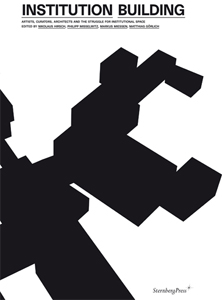A study that conceptualizes, tests, and practically applies the spatial strategy for the European Kunsthalle.
This book presents a study that conceptualizes, tests, and practically applies the spatial strategy for the European Kunsthalle (
www.eukunsthalle.com). The investigation is the result of the activities incorporated into a two-year work practice from 2005 to 2007, an iterative “applied research” informed by resonances between theory and practice.
The developed approach attempts to constructively question ideas of “stability” and “instability” and—in doing so—proposes a specific strategy for the European Kunsthalle that positions it within a local, regional, national and international contemporary discourse.
Nikolaus Hirsch, Philipp Misselwitz,
Markus Miessen, and Matthias Görlich have developed three spatial strategies: an unstable configuration, a stable strategy as well as a model that consolidates the potentials of both variants towards a, albeit slowly, growing institution. The proposal acts as a laboratory that plans a collective structure consisting of individual components. It results in a network of possible spatial options stemming from programmatic modules and leads to numerous possible spatial configurations. This alternative institution is a showcase of a growing phenomenon problematizing the relationship between authorship and institution. As time spans of exhibitions become shorter and programs become more differentiated, architecture in itself becomes exhibition—renegotiating the default role models of artists and architects.

